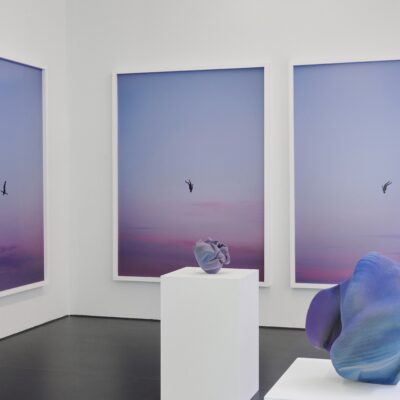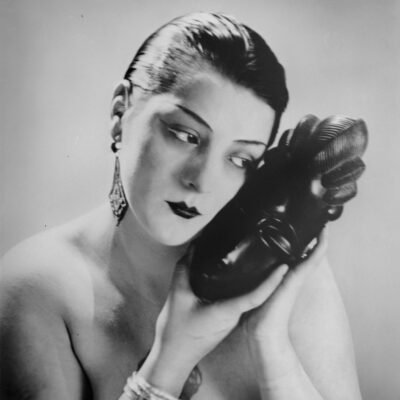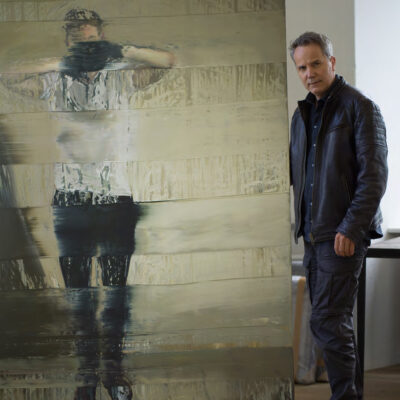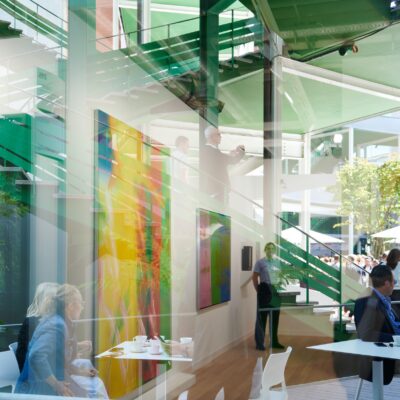Matthieu Gafsou, a Lausanne native born in 1981, did not start learning about photography when he was very young, however, his university studies in philosophy, literature, and cinema were evidence of his interest in and concern for our world. With an intellectual and methodical approach, he considered studying journalism; but did not count on a birthday present that would upset the sequence of events: a digital camera. Matthieu Gafsou got caught up in the game, and the focus on the camera never left him. He trained himself in different techniques as an autodidact, consulting the books of great photographers. Encouraged by the success of a group exhibition at the Maison Visinand, the undeniably-gifted artist succeeded in joining the School of Photography in Vevey in 2006.
For the exhibition at the Musée d’art de Pully, 450 images were selected by Matthieu Gafsou and Victoria Mühlig, the curator of the museum. Non-chronological, the hanging provides us with the guiding threads allowing us to decipher the photographer’s approach. Their names are: allegory, irony, pretence, control, latency, otherness, disenchantment and territory.
© Musée d’art de Pully, 2022. Photographe: Olga Cafiero
At the beginning of his career, the photographer who has a shy and anxious nature, worked with his subjects at a distance while controlling the staging. “Surfaces” (2006-2008) and “Terres compromised” stem from trips to Tunisia and Israel in connection with his paternal origins. The result is raw images where the human is only suggested – concrete architecture rising in sand or stone. The mountainous landscapes of his “Alps” series (2009-2012) play on the irony between the majestic beauty of nature and invasive tourism, the cause of so much damage.
Matthieu Gafsou, Espaces nomades I, de la série “Espaces nomades”, 2008. ©Matthieu Gafsou / courtesy of the artist and the Galerie C.
Does the human only interest Matthieu Gafsou through its shortcomings, excesses, the race against time, the fatality of the mortal condition? The photographer ironically defies religion and rubs shoulders with death in the world of the drug addicts in Lausanne. “Sacred” and “Only God can Judge me” are two very sensitive subjects that he treats in the form of portraits and still lifes. Catholicism then takes on the air of a coquettish old lady with these richly dressed clergy frozen in prayer, or these parishioners quietly waiting their turn in a cupboard. At the same time, drugs affect all sectors of society, but remain a taboo subject. The portraits of sweet-eyed junkies or that large blood-red poppy on a wall in the museum say it all. Aesthetics remains at the heart of his artistic approach. Trendy men connected to computers like guinea pigs illustrate the H+ series (2015-2018) on transhumanism. This quest for immortality and superpowers that could give birth to a robotized, computerized humanity looks like a “human comedy”. These photographs were exhibited at the Rencontres d’Arles in 2018.
Matthieu Gafsou, Pétrole II, de la série “Vivants”, 2020. ©Mattieu Gafsou / courtesy of the artist and the Galerie C.
The same year, a turning point was triggered in his work, motivated by his eco-anxiety, the challenges of our humanity in the face of multiple environmental and societal dangers. Father of two children, the young forty-something is embarking on a long-term project which has just been completed. Its name: “Vivants” or “Alive”. He makes it a personal matter, shedding certain patterns such as control or the scientific approach present in his previous series. The photographer innovates by manipulating the images with dye or petroleum. Bloody landscapes appear, still lifes drowned in bitumen, or views of urban China in aged colors on gnawed paper. These supernatural atmospheres against a background of pollution fascinate the eye.
Matthieu Gafsou, Fils I, de la série “Vivants”, 2019. ©Matthieu Gafsou / courtesy of the artist and the Galerie C.
All living beings participate in this series, even his children whom he puts on the stage during a stay on Reunion Island. Like Robinson Crusoe, they evolve in this luxuriant nature. The colors warm up, the intimacy and benevolence of the family portraits are good for the heart and the soul. Poetry and sweetness emanate from the images despite the danger in our home, the Earth.




